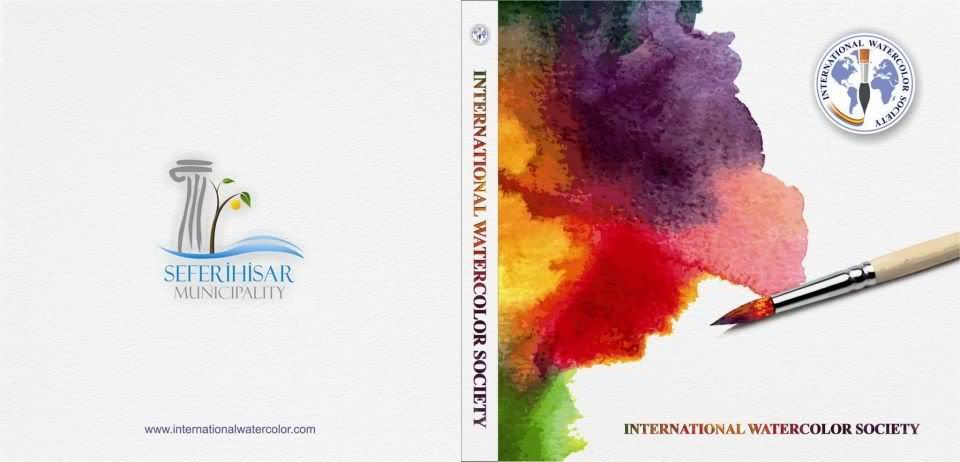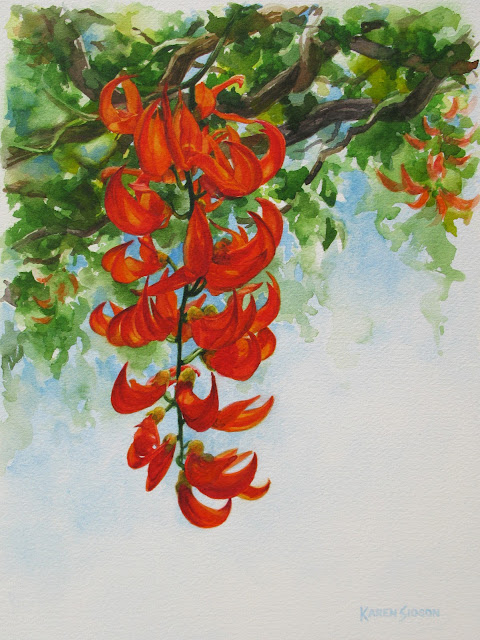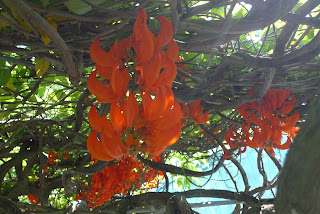Red Jade Vine
KS00085
12 x 16 inches
watercolor on paper
Collection of Librada Dela Fuente
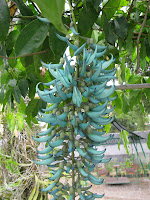
The name is actually a misnomer as the red jade vine is of a different species (
Mucuna bennettii) from the jade vine (
Strongylodon macrobotrys). Beautiful and not so commonly found, both are sought after by garden enthusiasts. These type of flowering vines are most often used to fill and decorate shaped frame structures for walkways. They provide very good shade.
We have both the jade vine and the coral vine (another name for the red jade vine) now in our garden courtesy of Kakang Badeng (grandaunt) who is a collector. It is from her garden that I get some of my more unusual flower references.
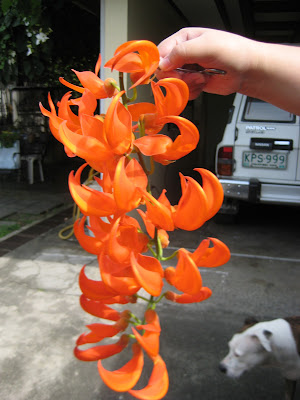
Painting this coral vine was quite a challenge. It was several months in the planning. First, because it is a seasonal bloomer. When Kakang Badeng asked me if I could paint it from a picture she took, I said I will have to see the coral vine closer up and in the natural setting. This is one of those blooms whose color cannot be captured by photographs well. The red orange coloration is so bright that the camera perceives the individual blooms to be almost one solid color. It becomes difficult to distinguish individual structure and detail. The chandelier-like formation of the combined blooms also can be limiting in that you are more or less stuck in having to show it hanging down otherwise, it might not become recognizable. I was able to take home a flower cutting the next time it bloomed. Lola had one of her gardeners climb and get a sample so we can see it closer up. At home, my sister had to hold the stem with a forceps because the stem has spicules. Not a very nice feeling when you get the sharp, tiny spikes in your fingers. I had to use masking tape to get mine out. But see how bright the coloration is. It is even more beautiful "live" because you see subtle differences within the orange color - hint of red, green, yellow and even violet.
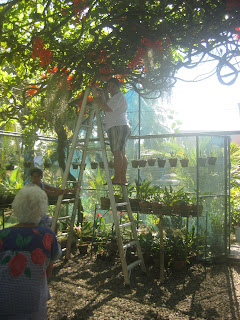
As I was studying the coral vine and making notes, I realized it would be easier composition-wise if I placed it in its natural setting. I can use the background to add more interest. I mentioned to my lola that I need more information. I will need to see how the flower is attached to the vine, how the leaves are oriented, etc. (more from curiosity and the need to see it - orient it logically in my brain than the actual need to paint details). And that is how I found myself atop a tall aluminum ladder the next time me and my sister visited. Be careful what you wish for, you just might get it. :D When we got there, this ladder was already in place complete with an assistant who would make sure it will not topple over. As I was climbing the ladder with my knees shaking not just from the height but the feeling that the ladder might not take my weight, I looked down and saw Kakang Badeng. She was so confident I could do it that it convinced even me. So who says there is no thrill and adventure in painting. This passes for the equivalent of bungee jumping when you get to my age. :D
A BRIEF INTRODUCTION TO COMPOSITION, THE OLD SCHOOL WAY
How I planned the painting itself can be summarized by this simple illustration.
I placed the subject (large orange oval) off center, left and higher up. The smaller orange ovals add interest but don't detract from the main subject. The function of the satellite ovals is to add interest but at the same time it also acts as a pointer or reminder so that your attention is brought back to the more dominating large oval. To make the background more dynamic, I angled it. The green zone is for the vine branches and leaves. Blue zone for the sky. The large white area at the bottom which I will leave mostly blank will reinforce the illusion that the bloom is hanging.
WORKING WITH PHOTOS
Here is how it looked from the top of the ladder. You have vines crisscrossing, some as thick as my wrist, others thin as a finger. The greenhouse has a metal framework which the vine uses for support. The leaves are mostly outside and on top of the greenhouse. Sunlight pierces through gaps and you can see glimpses of sky in the spaces. See how photographs are great tools for memory or recollection. Now to paint as if you're doing it plein air, don't get too caught up in the photo but distill the essence or principle of the thing and use it to suggest realness.

I had fun when creating the background dropping in colors and creating ghost branches. I had so much fun I forgot to photograph the process in between these two stages. Sorry. Sometimes you get too caught up with an idea, you forget about documenting. But the idea is to leave spots of areas lighter in color among the branches. Later, I would color these the same blue as the sky. The branches were semi-detailed in some spots and vague in others. Some areas, I covered with varying degrees of green. I debated against painting realistic detailed leaves because it will compete with the blooms and also because I wanted the illusion that you're viewing this from a distance. At that height and distance, either you would focus on the bloom or on the leaves and vines. That is how the normal human vision works. I want the viewer to think it was his idea to focus on the blooms so I left the detailing mostly on the flower itself. Try it, see how even when you consciously try to walk your eyes around the painting, you would find your eyes straying towards the main flower. Last, on the finished painting, you would notice that I signed my name very lightly with the same blue I used for the sky. I wanted the signature to be as unobtrusive as possible. I was thinking of not putting it in at all but because I will not be supervising the framing of this painting, I have a feeling that the framer might crop the large white area thinking to save space. Putting it in this way, they would feel compelled to include the signature. If this blank area was shortened, you will lose the feeling that the bloom is suspended high up.
So that is one way to do the old school way of composition. These days, we do not really adhere to the "rules" but sometimes it is good to know the basics.
Thank you for dropping by.
